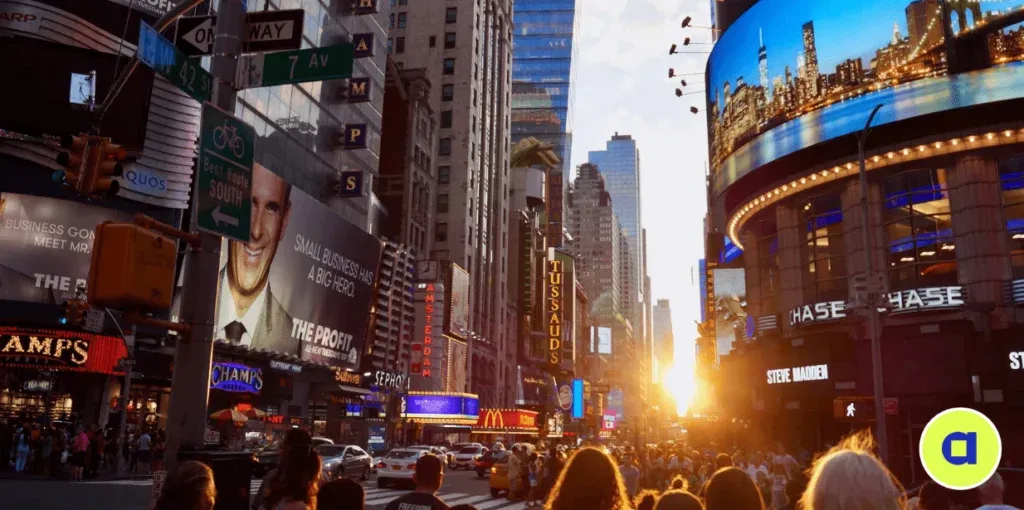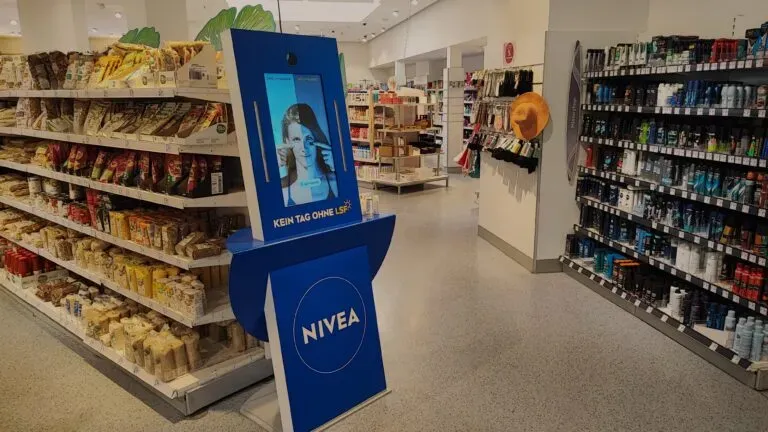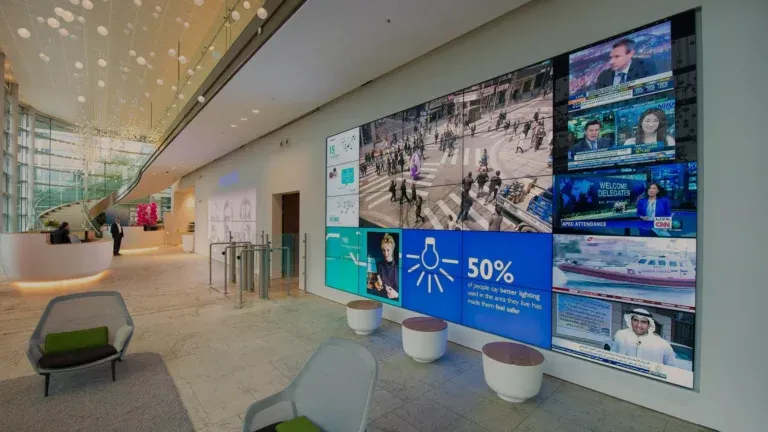DOOH advertising – 10 tips for creating creative DOOH advertising
DOOH advertising: creativity serves as the cornerstone of any successful advertising campaign.
Amidst unprecedented competition for consumer attention, digital out-of-home (DOOH) advertising offers a distinct and impactful method for engaging audiences in the physical world throughout their daily routines. However, neglecting the creative dimension of this potent medium can hinder advertisers from fully capturing audience interest and achieving desired business outcomes.
Beyond the mere aim of crafting visually enticing advertisements, creative components play a pivotal role in determining the success or failure of a DOOH campaign. Research from the Federation of Advertising reveals that 75% of an ad’s effectiveness is rooted in its creativity. Furthermore, findings from the Harvard Business Review indicate that exceptionally creative campaigns can nearly double sales compared to standard ones.
For brands intent on leveraging the full potential of this dynamic channel, it is crucial to address the unique creative demands of DOOH. Crafting captivating ads that seize consumer attention and drive action is essential.
Employing advanced tools and technologies not only enables brands to produce visually striking advertisements but also to manage content efficiently and achieve superior results in their marketing initiatives.
Here are 10 key elements to consider when creating DOOH creative:
Context:
In DOOH advertising, the context or physical environment in which the ad is played can significantly influence which creative will be most effective. DOOH advertising can be displayed on various screens, including advertising screens, and all of this can affect the audience viewing the ad and how they perceive the products shown.
From health-conscious consumers viewing ads on screens in a gym to affluent shoppers seeing ads in a luxury shopping mall, knowing who is likely to see the ad and where they will be at that moment allows advertisers to embed targeted messages in their creatives that are supported by the physical surroundings of the ad.
Color:
Color is a key factor in attracting attention, and contrasting colors can make DOOH ads stand out against their background. However, the effect of a specific color largely depends on the colors surrounding the DOOH ad. For example, an ad with bright blue colors displayed on an urban screen against a gray cityscape background is likely to stand out and attract attention, but the blue color in the same creative will have much less impact when viewed on a high billboard against a blue sky. To ensure the ad attracts maximum attention, advertisers should align the color of the creative with the physical environment in which the DOOH ad will be shown.
Contact time:
Contact time is the duration during which a viewer is likely to see the advertisement. Since consumers see DOOH ads throughout the day, different types of locations can have very different dwell times, which determines how advertisers tell their brand story.
For example, the viewing time for an ad on a large billboard on a highway, seen by people quickly passing by, may be only a few seconds, whereas the viewing time for an ad on a screen at a bus stop may be 5 minutes or more while passengers wait for the next bus. Advertisers activating DOOH networks with short possible viewing times should create creatives with fewer words, larger font, and more prominent branding for quicker and more effective message sharing.
However, when activating locations with longer waiting times, advertisers can expand their creative potential, delve deeper into storytelling, and emotionally engage the audience.
Product image:
The human brain processes images 60,000 times faster than text. That is why (especially in locations with short dwell times) including an image or visual element can help advertisers convey their message more quickly and strengthen the connection between their brand and the product or service. For example, instead of simply displaying the logo of an alcoholic beverage brand, including an image of the bottle will help instantly recognize it.
Using digital signage software, such as a Content Management System (CMS), helps efficiently manage content and achieve high results in advertising campaigns. Centralized video management systems and DOOH Display Solutions allow brands to create and manage stunning advertising creatives that capture the audience’s attention and prompt them to take action.
Branding and logos:
For some advertising channels, an excessive emphasis on logos can harm the brand’s storytelling. However, the transient nature of DOOH advertising means that consumers may see it for only a few seconds, so advertisers should generously use logos and branding if they want to make the best impression. Integrating branding into the text and visual effects of DOOH ads, using distinctive fonts, and placing the logo at the top of the creative will all help the brand stand out in the advertisement. Using digital signage software and a Content Management System (CMS) simplifies the process of content management and logo placement on screens.
Video and animation:
Motion can attract attention and increase the engagement of DOOH advertising. Creative teams should consider including moving elements (even simple animations) in DOOH creatives to achieve a greater effect. However, to ensure viewers do not miss key information, advertisers should adapt the type of motion based on the average dwell time. For locations with short viewing times, such as some urban billboards, consider using creatives with partial motion (limited movement of graphics on a static image). For places with longer waiting times, such as bus stops or gym advertising screens, think about adding video. Using video wall software and digital signage players makes it easy to integrate animations and video.
Tip for professionals:
Not all DOOH screens play sound. Therefore, it is important to always include subtitles to ensure the correct message is conveyed. Using Digital Out Of Home and video advertising without sound requires special attention to textual elements.
Time:
The time of day and day of the week when the ad is displayed play a significant role in how the message will be perceived. For example, an ad for “A hot cup of coffee to start the day” will be most effective in the morning. On the other hand, an ad for “a cold beer to unwind” will only make sense closer to the evening. To make the most effective use of DOOH ad display time, advertisers should carefully plan campaigns so their creatives have the optimal impact on the target audience. Using programmatic DOOH (pDOOH) allows automating this process by adjusting displays according to the time of day.
Events:
When creating seasonal or comprehensive campaigns, referencing an event (such as “March Madness”) or a specific moment in time (such as summer) in DOOH creative helps connect the brand with the excitement generated by the event. However, it is also important to remember that the relevance of the creative depends on the event. Therefore, it is crucial to launch large-scale campaigns at the right time to achieve maximum effect and avoid displaying DOOH ads too early before the event or too late after the moment has passed. Using DOOH software makes it easy to manage campaigns and adapt them to events.
Using trigger technologies:
For effective content management on screens, use a video management system. DOOH Display Solutions provide the ability to create and manage advertising campaigns that attract attention by placing ads based on weather triggers. Advertising requires integration with online weather services to broadcast the appropriate creative under conditions of rain, sun, or snow. Implementing various technologies, such as digital signage players and DOOH networks, ensures maximum efficiency.
Screen characteristics:
The technical specifications of a DOOH screen can significantly influence the design, text, and images used in an advertisement. Some DOOH screens are massive, like those in Times Square, while others are as small as an iPad, often found in grocery stores. Additionally, screens can be oriented either vertically or horizontally and may have varying resolutions from high to low. Although most software systems accommodate these technical requirements, taking screen characteristics into account during the creative process ensures that essential messages remain visible and impactful in the ad.
Omnichannel synchronization:
In today’s intensely competitive landscape for consumer attention, brands must deliver a cohesive message across both digital and physical platforms. By incorporating cutting-edge DOOH content into their omnichannel strategy from the outset, advertisers can achieve a harmonious blend of creative elements and storytelling across all consumer touchpoints, thereby enhancing the overall impact of their campaigns.
The power of DOOH:
Digital Out-Of-Home advertising presents limitless opportunities for advertisers to captivate audiences with imaginative and engaging content. For brands aiming for substantial success, focusing on the creative aspects of their DOOH campaigns is crucial. By applying the strategies outlined in this article, advertisers will be well-prepared to create compelling DOOH ads that not only capture attention but also drive consumer interaction and action.
Advision — Content Management System for remote management and media planning of broadcast video and audio content. We help offline businesses and advertising companies automate workflows and implement a robust Digital Signage infrastructure using our proprietary software and hardware solutions.
Contact us, and we will help you implement the most modern technologies to solve your problems!
Share the news




















